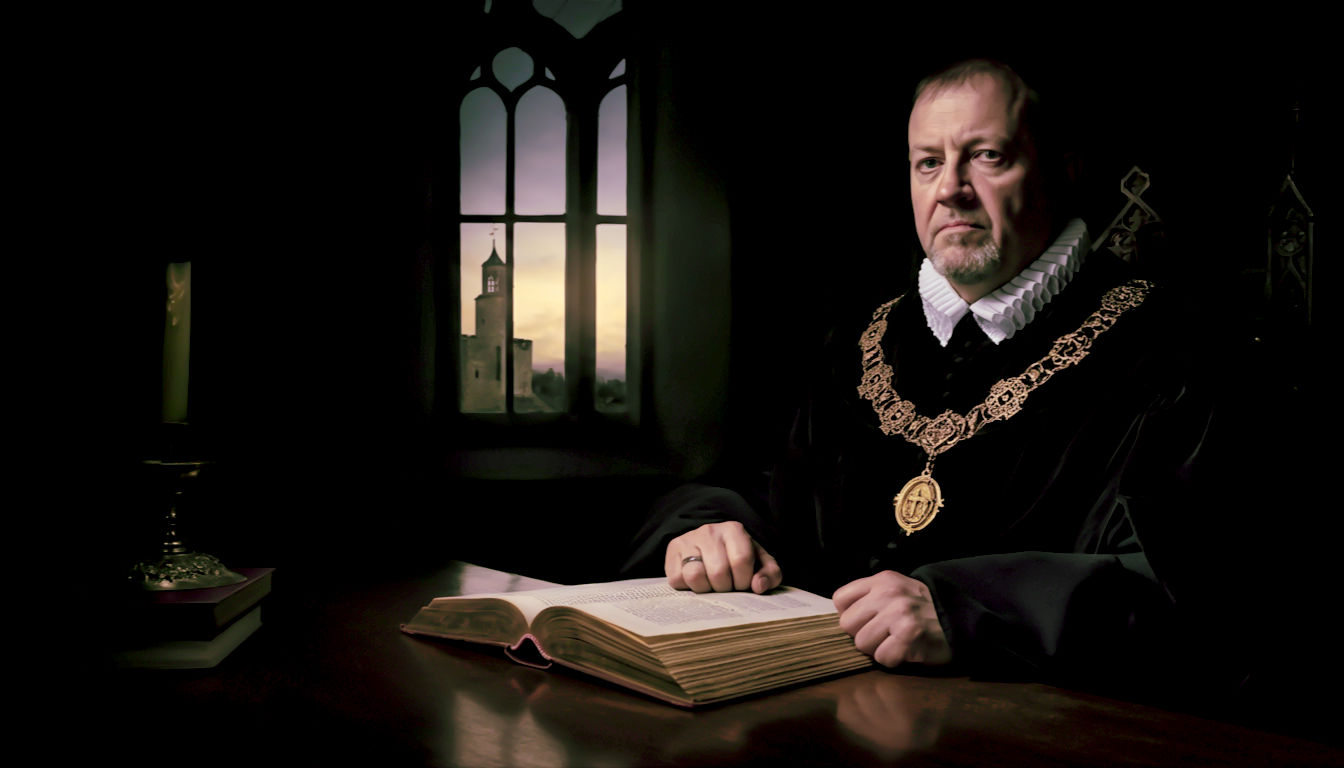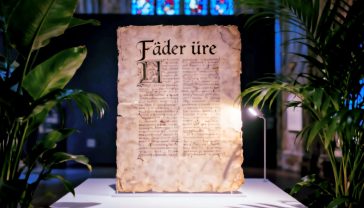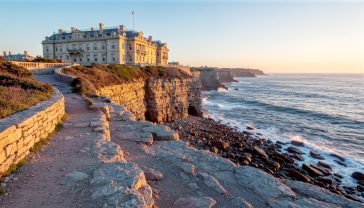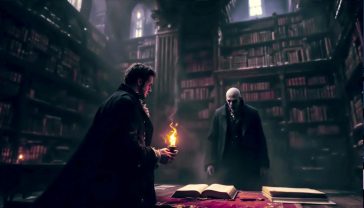Thomas More’s Renaissance Reflections: The Man Who Imagined Utopia and Died for His Conscience
A deep dive into Sir Thomas More: the humanist, author of Utopia, Lord Chancellor, and saint who clashed with Henry VIII and lost his head.

This post may contain affiliate links. If you make a purchase through these links, we may earn a commission at no additional cost to you.
To understand Sir Thomas More, you have to picture two very different scenes. First, imagine a man in a warm, book-lined study, a smile playing on his lips as he writes about a strange, perfect island called Utopia, a place with no money, no private property, and complete religious freedom. He’s a scholar, a wit, and one of the cleverest men in England.
Now, picture another man, grey and frail, standing on a wooden scaffold at the Tower of London. His crime? Refusing to agree that his friend and king, Henry VIII, was the head of the Church. He’s about to lose his head for a matter of principle.
The astonishing thing is, they are the same man.
Thomas More was one of the most brilliant figures of the English Renaissance. He was a lawyer, a philosopher, a family man, a top government official, and eventually, a Catholic saint. His life was a tightrope walk between the dazzling new ideas of his age and the ancient faith he refused to abandon. He was a man of deep, and sometimes troubling, contradictions: a visionary who imagined a society of tolerance, yet a powerful official who saw heretics burned.
To get to grips with More is to get to grips with a changing England—a nation caught between the medieval world and the modern one, struggling with questions of faith, power, and what it means to build a better society. His story isn’t just a dusty bit of Tudor history; it’s a timeless tale about the clash between your conscience and your country.
The Making of a Renaissance Man
Thomas More was a Londoner, born and bred. Born in 1478 on Milk Street, he was the son of a successful lawyer, Sir John More. From the start, it was clear young Thomas was incredibly bright. This was the dawn of the Renaissance in England—a time when old ideas were being challenged and the world seemed full of exciting new possibilities.
His father, wanting the best for him, secured him a place as a page in the household of John Morton, the Archbishop of Canterbury. It was like winning the lottery for a clever boy. Living with the Archbishop, More was at the very centre of English political and religious life. Morton spotted his talent right away, famously saying the boy would become a “marvellous man.”
He was sent to the University of Oxford, where he dived into the “new learning,” studying Latin and Greek. This wasn’t just about learning old languages. It was about rediscovering the wisdom of the ancient world—the philosophy, poetry, and politics of thinkers like Plato and Aristotle. This movement was called humanism.
What Was Humanism?
Don’t let the word fool you. Humanism then wasn’t about ditching religion. In fact, most humanists were devout Christians. For them, it was about improving the world by going back to the best sources. They believed that by studying the classics and the Bible in their original Greek and Hebrew, you could become a better person, create a better government, and build a more just society. It was an optimistic, forward-looking movement, and More was right at the heart of it.
After Oxford, his father insisted he train as a lawyer at Lincoln’s Inn in London. More excelled, but he was torn. For a while, he seriously considered becoming a monk, even living near a monastery and following the strict routines of the Carthusian monks. You can see the two sides of him already: the sharp, ambitious public figure and the quiet man of deep, personal faith.
In the end, the world of law and politics won out. But that deep spiritual streak never left him. It would define the rest of his life, and ultimately, lead to his death.
A Friendship Forged in Ideas: More and Erasmus
You can’t talk about Thomas More without talking about his best friend, Desiderius Erasmus. Erasmus, a Dutchman, was the superstar of European humanism. He was a brilliant, witty, and sometimes spiky scholar who travelled across Europe, sharing ideas with the continent’s greatest minds.
When Erasmus came to England, he and More hit it off immediately. They were intellectual soulmates. They shared a love of classical learning, a sharp sense of humour, and a deep frustration with the state of the Church. They saw corruption and superstition everywhere and believed the best way to fix it was through education and gentle reform. They would mock ignorant priests and pointless rituals, hoping to nudge the Church back to what they saw as the simpler, purer faith of the early Christians.
Their friendship was a meeting of minds that helped shape the English Renaissance. They wrote to each other constantly, sharing jokes, ideas, and manuscripts. It was during a stay at More’s house that Erasmus wrote one of his most famous works, In Praise of Folly, a satirical attack on the foolishness he saw all around him. And it was More who would write the most revolutionary book of them all.
Utopia: A Map to Nowhere, or a Plan for a Better World?
In 1516, while on a diplomatic mission for the king, Thomas More published the book that would make him immortal. He called it Utopia. The word, which he cleverly made up from Greek, can mean either “no-place” or “good-place.” And that puzzle is the key to the whole book.
Utopia is a work of fiction, presented as a real conversation. In the book, a traveller named Raphael Hythloday (another joke name, meaning “speaker of nonsense”) tells More about a mysterious island he has visited. This island, Utopia, is a perfect society, and it’s the polar opposite of the greedy, violent, and unjust Europe of More’s day.
What is Utopia Actually About?
Life on Utopia would have seemed utterly bizarre to a 16th-century reader.
- No Private Property: All property is owned in common. People live in identical houses, which they swap every ten years. They eat in communal halls and get the supplies they need from public storehouses. Because there’s no money, there is no greed or theft.
- Work for Everyone: All citizens (men and women) must work, but only for six hours a day. The rest of their time is for leisure and, crucially, for education.
- Religious Tolerance: This was perhaps the most radical idea. Utopians can believe almost anything they want. The only rules are that you must believe in a divine being and an immortal soul, and you can’t be aggressive in trying to convert others. Priests can even marry.
- A Managed Society: It’s not all freedom, though. Everyone wears the same simple clothes. Travel between cities requires permission. And for the dirtiest jobs? The Utopians use slaves, who are typically criminals or prisoners of war.
A Joke or a Blueprint?
For 500 years, people have argued about what More was up to. Was Utopia a serious proposal for a better way of life? Or was it a clever satire, designed to make people think by showing them a world that was the complete opposite of their own?
The answer is probably a bit of both. Utopia was less a blueprint and more a mirror. More was holding it up to 16th-century England and saying, “Look at this. Look at your silly obsession with gold, your cruel landlords turfing families off their land, your endless, pointless wars.” He uses the fictional Utopians to criticise very real problems. The famous line about landlords—that meek sheep have “become so greedy and wild that they devour human beings”—was a direct attack on the ‘enclosure’ movement, where common land was fenced off for sheep farming, leaving thousands homeless.
But there are also parts of Utopia that feel deeply uncomfortable. The lack of privacy, the state control, the existence of slavery—it has a dark side. More wasn’t necessarily saying “let’s do this,” but rather, “let’s think about this.” He was starting a conversation about justice, fairness, and the kind of society we want to live in—a conversation that we’re still having today.
Climbing the Greasy Pole: More in the King’s Service
While he was dreaming up perfect worlds, the real world was making demands on Thomas More. His legal career was taking off. He was known for being incredibly sharp, effective, and, most importantly, honest—a rare quality at the time. He became an MP, an undersheriff for the City of London, and was increasingly noticed by the most powerful man in the country: King Henry VIII.
Henry VIII wasn’t yet the bloated, paranoid tyrant we remember. In his youth, he was handsome, athletic, and intelligent. He saw himself as a true Renaissance prince and loved to surround himself with brilliant men like More. He drew More into his inner circle, valuing his advice and his witty conversation.
More rose quickly. He became a trusted diplomat, Speaker of the House of Commons, and in 1529, he was given the top job: Lord Chancellor. He was now the most powerful man in England after the King himself.
But it was a dangerous position to be in. To serve a king like Henry, you had to be willing to bend. And Thomas More was a man who, when it came to the things that mattered most, could not be bent. For years, he had managed to balance his worldly ambition with his private faith. That balancing act was about to become impossible.
The Great Matter: A King’s Love and a Kingdom’s Faith
The crisis that would wreck More’s career and end his life all started with what became known as “the King’s Great Matter.”
Henry VIII was desperate for a male heir to secure the Tudor dynasty. His wife, Catherine of Aragon, had given him only one surviving child, a daughter named Mary. By the mid-1520s, Catherine was past childbearing age, and Henry was convinced their marriage was cursed by God because she had previously been married to his older brother.
He was also deeply in love with a charismatic and intelligent young woman from the court: Anne Boleyn. Anne refused to be the King’s mistress; she wanted to be queen.
So, Henry needed a way out of his marriage. He asked the Pope in Rome to grant him an annulment, effectively declaring that his marriage to Catherine had never been valid in the first place. This wasn’t a simple request. Catherine was the aunt of the most powerful ruler in Europe, the Holy Roman Emperor Charles V, whose armies were camped outside Rome. The Pope was in no position to anger the Emperor. He stalled.
As the years dragged on, Henry’s patience wore thin. A new, radical idea began to take hold at court, pushed by reformers like Thomas Cromwell and Anne Boleyn herself: what if the King didn’t need the Pope’s permission? What if the King of England was the supreme authority in his own kingdom, in matters of faith as well as politics?
For Thomas More, this was a terrifying thought.
The Clash of Conscience and Crown
More was Lord Chancellor when the storm broke. As a loyal servant of the King, he did his duty. He supported Henry’s attempts to get his annulment through the proper channels. But he could not, and would not, support a complete break with the Catholic Church.
For More, the Church wasn’t just a collection of priests and bishops. It was a single, united Christian community, stretching across Europe and back through centuries of tradition, with the Pope as its earthly head. To break from that was, in his eyes, to risk the soul of the entire nation. It was a line he could not cross.
The Act of Supremacy
In 1532, knowing he couldn’t stop what was coming, More resigned as Lord Chancellor, citing ill health. He retreated from public life, hoping his silence would protect him. But Henry wouldn’t let him go.
In 1534, Parliament passed the Act of Supremacy. This act officially declared that the King of England was the “Supreme Head of the Church of England.” The power of the Pope in England was destroyed. To seal the deal, all of the King’s important subjects were required to swear an oath, accepting the Act and the legitimacy of Henry’s new marriage to Anne Boleyn.
To refuse the oath was treason. And treason meant death.
A Silence That Shouted Treason
Thomas More was summoned to swear the oath. He refused.
He didn’t make a grand speech or a fiery protest. He simply, and quietly, said no. He knew that under English law, silence was consent. As long as he didn’t explicitly speak out against the King’s supremacy, he believed he couldn’t be convicted of treason. His silence was a legal fortress, built to protect his body while he saved his soul.
He was arrested and imprisoned in the Tower of London. For over a year, they tried to break him. Friends, family, and officials pleaded with him to just say the words. His favourite daughter, the brilliant Margaret Roper, visited him, begging him to give in for the sake of his family. He wouldn’t budge. He famously told her he had never abandoned his family, but he couldn’t “go with them to hell.”
Trial and Execution
His trial, when it came in 1535, was a sham. The prosecution’s case rested on the perjured testimony of a man named Richard Rich, who claimed he had heard More deny the King’s supremacy in a private conversation.
Once convicted, More knew the game was up. His silence had failed him. Now, finally, he spoke his mind. He told the court that Parliament had no right to make a layman the head of the Church. It was against the laws of God and Christendom.
On 6th July 1535, he was taken to Tower Hill to be executed. He went to his death with a calm dignity and even a flash of his old wit. He reportedly told the executioner, “Pluck up thy spirits, man, and be not afraid to do thine office; my neck is very short.” His final words were a perfect summary of his life and the conflict that ended it: “I die the King’s good servant, but God’s first.”
A Complex Legacy: Saint, Sinner, or Man of His Time?
Thomas More’s story didn’t end on the scaffold. In 1935, four hundred years after his death, the Catholic Church declared him a saint. He is celebrated as a martyr for conscience, a man who died for his principles. The famous 1960s play and film, A Man for All Seasons, portrayed him as a hero of integrity, standing firm against a tyrant.
But the real Thomas More is more complicated than that.
The Saint and the Persecutor
There’s a difficult truth to face. While More was imagining the religious tolerance of Utopia, as Lord Chancellor, he was also a fierce opponent of the Protestant Reformation. He saw the new ideas of Martin Luther and William Tyndale as a dangerous heresy that threatened to tear society apart.
He used all the power of his office to stamp it out. He had “heretical” books banned and burned. He arrested suspected Protestants and had them interrogated. During his time as Chancellor, six men were burned at the stake for their faith. More believed he was doing his duty, protecting the flock from wolves. But for those who suffered under him, he was a merciless persecutor.
How do we square the tolerant visionary with the ruthless official? The simple answer is that we can’t. More was a man of his time. In the 16th century, religious belief wasn’t a private matter; it was the glue that held society together. To attack the Church was to attack the state. More saw heresy as both a spiritual disease and a form of treason. His actions seem brutal to us, but they were driven by a genuine, if terrifying, conviction that he was saving souls from eternal damnation.
Conclusion: The Man for All Seasons
So, who was Thomas More? A forward-thinking idealist or a backward-looking dogmatist? A hero of conscience or a cruel persecutor?
He was all of those things. He was a product of the Renaissance, a movement that was itself full of contradictions. It was an age that looked back to the wisdom of the ancients to forge a new future. More embodied that tension. He was a humanist who loved reason and learning, but he was also a man of unshakable medieval faith.
His book, Utopia, gave the world a new way to think about society and justice. It’s a book that inspired idealists, socialists, and dreamers for centuries. His death, on the other hand, became a powerful symbol of defiance against the power of the state. He showed that there are some things a person cannot compromise on, even if it costs them everything.
Thomas More wasn’t a simple plaster saint. He was a brilliant, complex, and deeply human figure, caught in the crossfire of a turbulent age. He was the king’s good servant, right up until the moment he was asked to stop being God’s first. In that final choice, his life, and his death, became a story for all seasons.
Further Reading
For those wishing to delve deeper into the life and times of Sir Thomas More, the following resources are highly recommended:
- The British Library: Explore digitised versions of More’s works, including early editions of Utopia.
- The National Portrait Gallery, London: View portraits of Thomas More and other key Tudor figures, including the famous drawing by Hans Holbein the Younger.
- BBC History – The Tudors: An accessible and comprehensive resource for understanding the political and religious context of More’s life.
- Stanford Encyclopedia of Philosophy – “Thomas More”: A detailed academic entry on More’s philosophical and political thought.






